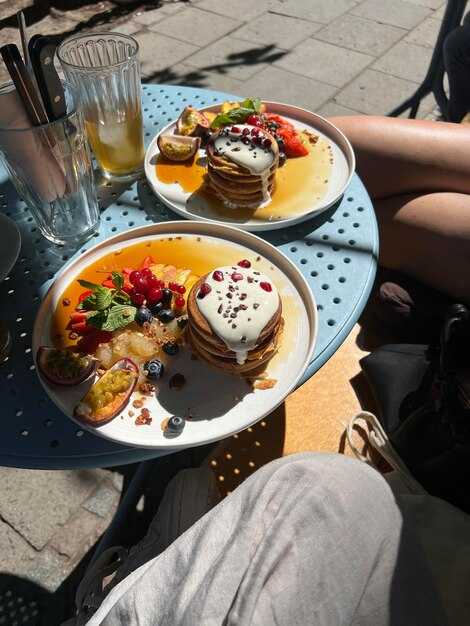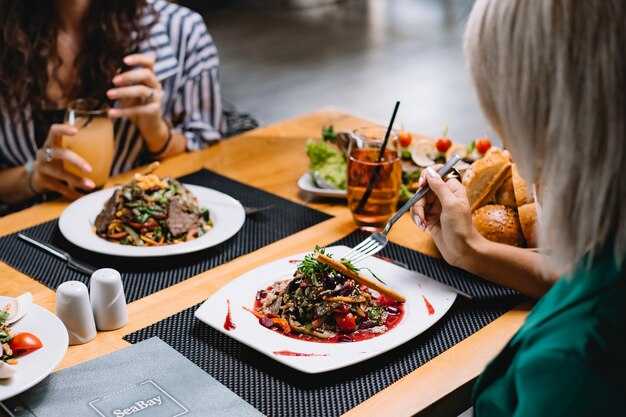Start here: grab a warm, freshly prepared haring from a haringhandel stall near the canal. For every dining stroll in Amsterdam, this bite is a better introduction than most. youll notice the light sweetness of onion, the tang of pickles, and the clean sea flavor that anchors the day ahead.
Next, explore gouda like a local at a cheese shop near Dam Square. From the boards you can pick a gouda aged 12 months for a fine, nutty finish. Enjoy fresh flavors with a thin slice and apple syrup on a cracker, and grab a crusty bread to complete the bite.
Dive into Amsterdam dining classics with freshly prepared plates. At Foodhallen youll taste Dutch staples from many stalls, while 德卡斯 grows produce on site and serves it in seasonal forms. Moeders offers meals made with love; ask for pickles on the side and a tangy sauce to balance the plate.
Walk the streets for a practical loop through Jordaan and De Pijp, where bakeries, fish stalls, and tiny cafés line narrow avenues. Start near Central Station, then stroll toward the Old Center, grabbing a hot snack along the way. In every corner you feel a warm welcome, and you can nab a serving of herring or gouda to snack on as you go. This route keeps you only in the best neighborhoods.
Use this guide to plan your meals with a smart mix of markets, bistros, and fine dining. Reserve a table at a canal-side spot for sunset, then zigzag to a casual counter for a quick bite; youll be back for a second visit because the flavors stay with you long after the fork leaves. From fresh fish to roasted meats, the Dutch food scene offers better memories at every turn.
Classic Dutch dishes to try in Amsterdam
Try stroopwafels fresh off a local stand near the canals; this syrup-filled treat pairs a crisp, thin waffle with warm caramel. Youll notice the contrast between the crisp edges and the soft center, and it makes a perfect companion for coffee to kick off your Amsterdam dining experiences. This little bite highlights the city’s baking craft and is easy to grab on the go in the morning or after a museum visit.
In this guide book, youll find where to try each dish, from street stalls to Michelin picks, with practical notes on portions and timings. This quick reference helps you plan a day that balances local bites with a touch of refined style.
Haring is served fresh at harbor stands and along the canal belts; you eat with your hands, savoring onion and pickle notes. Always order it with onions, especially if youll be new to raw fish. This is a cornerstone of Amsterdam’s street dining near the old harbor and Dam Square.
Bitterballen and kroket deliver a crunchy shell and a creamy beef ragout center. Brown cafés and Michelin guide picks offer home-style versions that pair well with a local beer. Youll find these bites as quick sharing dishes after a museum visit or before a canal cruise; the contrast between crust and filling stays memorable. A number of venues keep kroket warm in iron skillets to preserve that rustic aroma.
Poffertjes are tiny, fluffy pancakes, served hot with melted butter and a dusting of powdered sugar. You can find them at markets near Centraal Station or in family-run stalls along the canals. The bite is soft and playful, a bright counterpart to heavier dishes and a perfect break during a full day of exploring.
Erwtensoep (snert) warms cold evenings; a thick pea soup with pork, served with rye bread and smoked bacon. Ask for it in winter at family-run canteens and at traditional market spots near the canal belt; you get a filling, comforting experience that feels like a warm home meal while you plan the rest of your evening.
Where to find these classics
| 菜肴 | Where to Try | Why it’s Iconic |
|---|---|---|
| Stroopwafels | Local stands near markets and canals | Fresh syrup, crisp edges, warm center |
| Haring | Hareng stands along the harbor and canal belts | Classic raw fish with onion and pickle notes |
| Bitterballen | Brown cafés and Michelin guide picks, often kept warm in iron skillets | Crispy shell, creamy ragout center |
| Kroket | Snack bars near the Jordaan and central areas | Beef ragout center with a satisfying crunch |
| Poffertjes | Markets near Centraal Station and canal-side stalls | Fluffy, mini pancakes with butter and sugar |
| Erwtensoep (Snert) | Winter markets and family kitchens near the canal belt | Thick, comforting pea soup with pork |
Where to find authentic Dutch snacks at markets and stalls
Start your snack hunt at Albert Cuyp Market, where youll find freshly fried bitterballen and gouda slices at local stalls through the morning and into the afternoon. Grab a handful of pickles and a side of mustard sauce to create a quick dinner, and keep wandering to taste more bites as you go.
Across Amsterdam, you can compare how fresh ingredients shape classic snacks, always chasing local flavors and a relaxed street-food style that fits your schedule. Whether youre exploring solo or with friends, markets deliver immediate, hands-on dining experiences that feel authentically Dutch.
- Albert Cuyp Market (De Pijp) – classic stalls serve bitterballen, kroket, gouda, and poffertjes. Look for lines at the frituurlanes; youll taste crisp exteriors and creamy centers. Pair with remoulade or mustard sauce, and snack on pickles between bites. Best time: morning through early afternoon; price range: moderate; extra tip: buy a small portion and share with your group to sample more styles.
- Noordermarkt (Noord) – Saturday mornings shine for stroopwafels, fresh cheese, and herring. Try powdered sugar dusting on warm poffertjes, then bite into a chewy stroopwafel for a sweet finish. It feels like a local postcard, with stalls that keep portions reasonable for a longer tasting walk.
- Dappermarkt (East Amsterdam) – diverse stalls offer bitterballen, frikandel, and kroket, plus quick-sell pickles and bread to balance richness. Explore through the rows to compare sauces and coatings; its open-air vibe makes snack-hopping easy and friendly. Best for: afternoon bites and casual dining between shops.
- Foodhallen – indoor market with michelin-connected and local stalls; sample bitterballen with remoulade, gouda croquettes, and tiny poffertjes. The space invites a small-dish approach to dinner, so you can pace your tasting through several vendors. Look for deals on klook to plan a snack-led route, then finish with a light dessert and a cold drink.
- Waterlooplein and nearby markets – quick bites from stalls focus on cheese, pickles, and hearty fried snacks. This route suits a relaxed stroll through central Amsterdam, with opportunities to compare fresh components and find a final bite to cap your tasting journey.
Top neighborhoods for Dutch dining experiences in Amsterdam

Start in Jordaan, where the canals frame intimate eateries that serve traditional Dutch flavors. Grab haring straight from a stall, then savor kaas with onions and mustard, and finish with freshly baked stroopwafels. Whether you want a quick bite or a proper dinner, youll discover syrup, sauce, and home-style recipes that feel authentic. Cobblestone lanes and cozy courtyards invite you to linger, near the canal edges where the city slows for a moment and the welcome stays warm. Several stands along the canal offer fresh haring.
Next, De Pijp offers a lively mix of casual spots and markets. Sample cheeses from near farms–gouda, beemster, and aged kaas–and pair them with a bright, freshly made sauce. Order bites of bitterballen and kroketten, traditionally Dutch favorites that travel well and always satisfy, especially if you like a mix of textures. The streets near the canals stay buzzing, and the experiences you collect here feel distinctly Amsterdam, with locals posting tips and flickr photos that capture the vibe, which youll find helpful as you plan your night. Near these streets, markets brim with samples. Here you get better value than in more formal quarters.
Where to eat and what to order
In Jordaan, line up a haring snack with onions and pickles, then finish with stroopwafels made freshly in a bakery. A cheese board with soft cheeses and a peppery sauce pairs nicely, and you can’t go wrong with bites of bitterballen as a starter. Look for spots near the canal that offer outdoor seating, so you can watch boats glide by while you dine.
In De Pijp, aim for a small tasting menu that showcases different cheeses and a range of sauces. Grab a mix of bites from local counters or share a plate of croquettes with your companions. The neighborhood’s relaxed pace makes it easy to sample several places without feeling rushed.
Practical tips for planning your Dutch dining night
Visit midweek to avoid long queues, and stroll between venues to savor the atmosphere. Bring some cash for market stalls, while most restaurants accept cards; some spots offer smaller plates designed for group sharing. If you keep your eyes open, you can discover a hidden gem near a quiet canal that serves freshly prepared dishes and a fine selection of Dutch drinks. The best experiences come from trying a mix of near canals bites and more formal dinners, so you can compare what you like best.
Tips for ordering at Dutch restaurants: phrases and customs
Start with a concise order: ask what the chef recommends and say ‘I’ll have the haring and a beer’ to anchor your experience, especially on streets near the canals.
To sample a range, order a couple of small plates or bites to share, balancing savory options with a sweet stroopwafels afterward; this acts as a mini guide youll use through your dinner. Save room for your bites.
Use clear phrases in English or Dutch to speed things up: ‘Alstublieft’ for please, ‘Dank u wel’ for thanks, and ‘Mag ik de rekening alstublieft?’ when you’re ready for the bill.
Ask for local specialties or recommendations: ‘What do you recommend tonight?’ and request ‘these cheeses’ or bread to sample regional flavors; many places pair them with a glass of beer or a scoop of mustard.
Consider haring and haringhandel stands near the canals; if you see stands on the streets, try a quick bite and save room for more later.
Respect the service pace; Dutch tables often keep things moving, so signal with a firm nod and a quick ‘we’re ready’ to avoid delays. If you want separate checks, say ‘this is mine, yours’ or ‘could you split the bill please?’
Finish with dessert or coffee and a sampling of stroopwafels; many places offer warm coffee to pair with the sweet treat.
Plan ahead using a guide like klook or flickr tips to map the best spots near the canals; you’ll see haring stands and cheese shops that highlight the local flavors. This practical approach helps you build a memorable dinner. these elements will deepen your experience.
Tipping etiquette in Amsterdam: when to tip and how much
Check whether a service charge is included on the bill. If not, always tip 5-10% for warm, attentive service. Round up to the nearest euro for casual meals near the capital’s busiest streets.
In restaurants and cafes, tip 5-10% for table service when no service charge appears on the receipt; if youre happy with the service, a small round-up works well and feels natural in everyday dining. Where you dine, keep the tip simple.
For bars, 1-2 euros per drink or per round; hotel staff: 1-2 euros per bag; for guided tours, tip 5-10% of the tour price or €5-€10 per person for shorter experiences. If you booked klook tours or a local guide, apply the same guideline.
Market stalls and stands near food halls often don’t expect tips, but you can leave a euro or two if staff are helpful, especially after tastings of savory cheeses or stroopwafels made with syrup and warm sauce. Some locals share tipping tips on flickr; you can use those tips as a rough guide from locals, particularly near edam cheese shops and other local producers.
Reservations, opening hours, and how to avoid long waits

Reserve a table for your dinner on weekends at least two weeks ahead using the restaurant’s site or a trusted platform like klook. This guarantees a place, especially near canal-front stands that offer a fresh, savory experience. traditionally, many Dutch bites begin with bitterballen and a mustard sauce, so plan a tasting-style start to your evening.
Our guide helps you plan the evening to maximize your chances of a smooth seating. Opening hours vary by neighborhood, but you can expect lunch from about 12:00–14:00 and dinner from 17:00–23:00, with some places staying open later on Fridays and Saturdays. Always confirm on the restaurant page the day you book, because events or holidays can shorten or extend service.
- Check the official site or klook for exact times and a current availability calendar; use a live booking to secure your slot and avoid waiting at the door.
- Choose places that are not full yet, especially along the canal or in busy streets like near the Jordaan; these spots stand out for a fresh experience but fill fast, faster than casual dining.
- If you arrive early, you can wander streets nearby and sample a quick bite, or sit at the bar where you can order a savory appetizer like bitterballen with a small sauce while you wait.
- For larger groups, consider a two-step dining plan: a light starter at 17:30 and the main dinner later, which is often easier to secure than a single, full seating.
Tips to reduce waiting:
– If youre staying home or in a hotel, you can walk to nearby venues and check walk-in times, but booking is still better.
– Look for places offering a small tasting menu or a share-style dinner to speed up seating; it is often a better fit for groups and still gives a full experience.
– Bring a short list of three options, so you can move to the next spot without losing time if one is full.
While you wait, stroll along the canal and across iron bridges; you can discover a few cheese shops offering Gouda and Edam boards that pair well with bread and syrup on the side. Hand in hand with the downtown lights, your evening becomes a richer experience that feels tailored to your itinerary–whether you prefer classic Dutch comfort or a modern savory style.
Budget-friendly Dutch meals under 20 euros in Amsterdam
Grab freshly caught haring at a haringhandel near the canal for about €3-5, eat standing in classic street style, and keep exploring the city without breaking the budget.
Broodje haring with onion and a dab of sauce costs €4-6; Where these busy stalls line the canals, the taste is classic and quick, like a snapshot of every day Dutch dining.
Patat 与 sauce 和 mayonnaise at a local snackbar stays under €8; opt for a small portion to keep within €20 for two meals during 水渠 tours.
Order a kroket 或 frikandel at a local stand; these options cost €2-4 and pair with coffee or beer to stretch the budget during canal tours, or a late-night stroll.
Grab a wedge of Gouda cheese from a local shop to add to a bread roll for €3-5; Gouda, traditionally made by small dairies near the center, gives you a taste of the capital‘s dairy tradition.
Finish with poffertjes dusted with powdered sugar, around €4-6, a sweet note of Dutch street dining near the Albert Cuyp market, a great end to your food walk.
These options, always straightforward and easily combined, keep you under €20 per person, and only require a short walk between bites, whether you’re a local or a visitor. This guide helps you 图书 a local food walk and experience authentic Dutch flavors near the canals.



评论